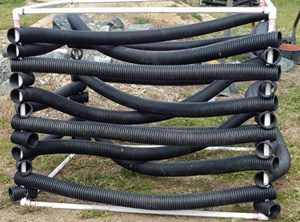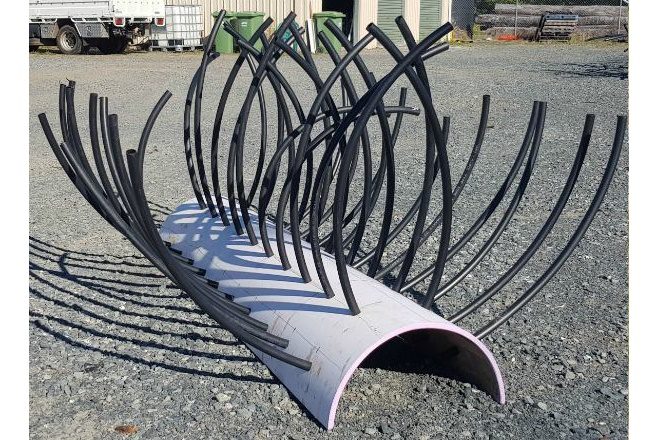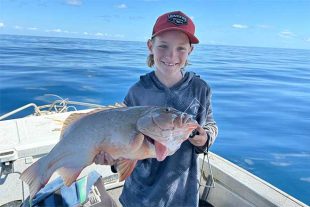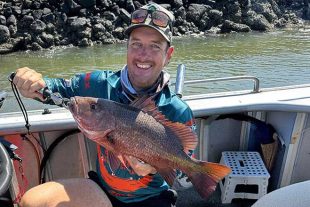 STORIES of the ‘one that got away’ might become a thing of the past for Toowoomba anglers thanks to an Australian-first program to install fish attractors in Cressbrook Dam.
STORIES of the ‘one that got away’ might become a thing of the past for Toowoomba anglers thanks to an Australian-first program to install fish attractors in Cressbrook Dam.
Department of Agriculture and Fisheries Senior Fisheries Biologist Andrew Norris said fish attractors were specially built structures designed by DAF researchers to attract fish. “Fish attractors mimic natural habitat such as fallen trees or rock piles, providing shelter and access to food for a variety of fish species,” Mr Norris said. “Fish attractors lure fish into a particular area and encourage them to hang around, making it easier for anglers to work out where fish are likely to be and hopefully catch more fish. It is anticipated that fish attractors in Cressbrook Dam will be effective for temperate and sub-tropical species such as Australian bass and golden perch.”
Mr Norris said different types of fish attractors such as porcupine cribs, synthetic trees, spiders and cubes would be constructed, installed and compared.
“Local volunteers are helping to construct and install the fish attractors which will be made of inert or organic materials and will not impact on water quality,” Mr Norris said. “Where possible, fish attractors will be made from recycled materials to reduce landfill and convert potential waste into useful fish habitat. The locations of all fish attractors will be made available to the public via signage and the internet.”
Mr Norris said the Habitat Enhancement Research Program to install fish attractors in Cressbrook Dam commenced in January 2018.
“Data from a sonar survey of Cressbrook Dam and an electrofishing survey of fish distributions and populations was used to develop a fish attraction plan,” Mr Norris said. “This plan provides a blueprint of the type and location of all fish attraction structures to be installed in Cressbrook Dam over the next three years. Twice yearly electrofishing surveys, targeted angling and monthly creel surveys will assess the impacts of the installation of fish attractors on angler catch rates, satisfaction and visitation rates with results to be widely published.”
Mr Norris said the Habitat Enhancement Research Program was a collaboration between DAF, Toowoomba Regional Council, the Australian Government’s Fisheries Research and Development Corporation and local angling and fish stocking groups. “The aim of fish attractors is to improve recreational angling and tourism in the region by increasing structural habitat complexity in the dam,” Mr Norris said. “Supplementing the limited structure in Cressbrook Dam by installing fish attractors should help aggregate fish and increase the likelihood of anglers catching them. Improving fishing should also boost local tourism by attracting more and longer stays to the camping ground on the dam’s shores.”
Toowoomba Regional Council Mayor Paul Antonio said the Council saw many benefits in this partnership to improve the stock that may offer anglers a better day on the water.
“The project could benefit local anglers while providing an extra incentive for visitors to travel to our region, stay in our towns and enjoy some recreational fishing,” Mr Antonio said. “This research project is a win for our region and provides a real opportunity to improve the fish habitat of Lake Cressbrook.”
TRC Parks and Recreation Services portfolio leader Cr Joe Ramia said he was keen to see the community involved in the project.
“I encourage interested people and community groups to come along to the working bee on Saturday 15 September 2018 from 8.00am until 1.00pm and help build the various structures before they are deployed at the dam,” Mr Ramia said. “There is the potential to use a range of recycled, non-toxic materials for different structures.”
Members of the public wishing to attend the working bee at Cressbrook Dam on Saturday, September 15, 2018 should email Andrew.norris@daf.qld.gov.au
Follow Queensland Agriculture on Facebook and Twitter (@QldAgriculture).
 Bush ‘n Beach Fishing Magazine Location reports & tips for fishing, boating, camping, kayaking, 4WDing in Queensland and Northern NSW
Bush ‘n Beach Fishing Magazine Location reports & tips for fishing, boating, camping, kayaking, 4WDing in Queensland and Northern NSW









